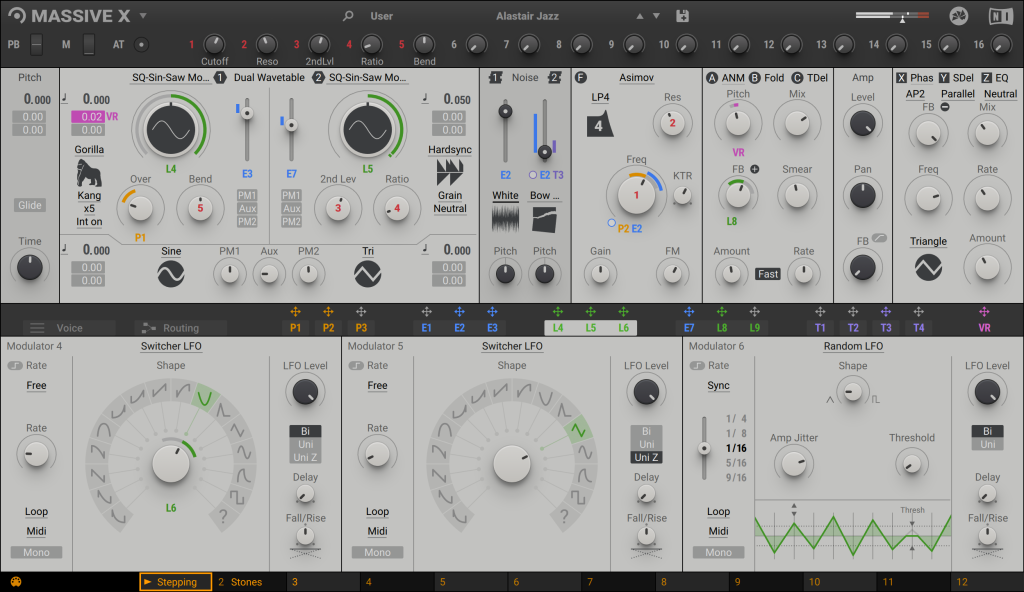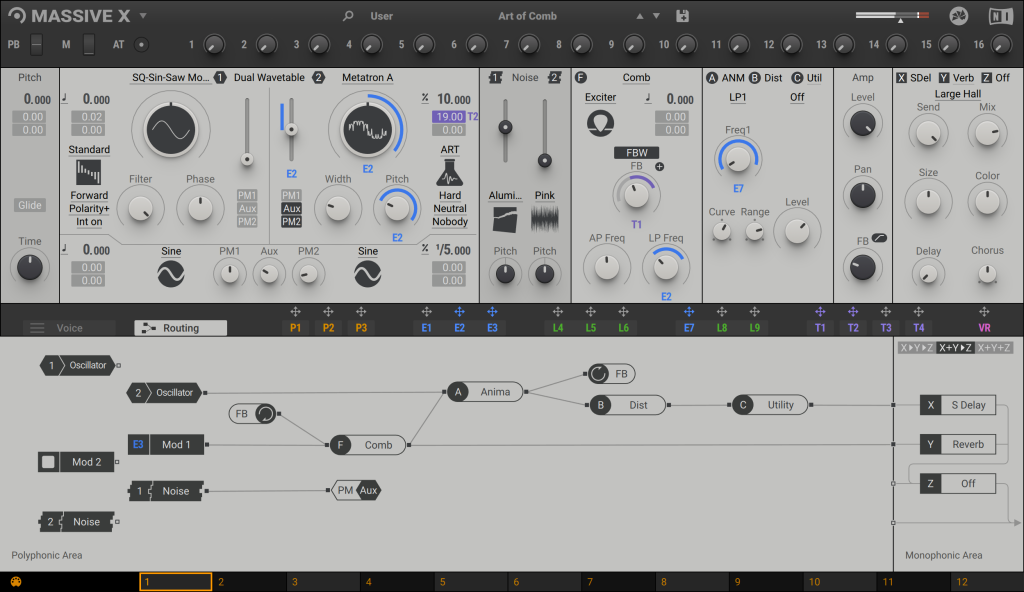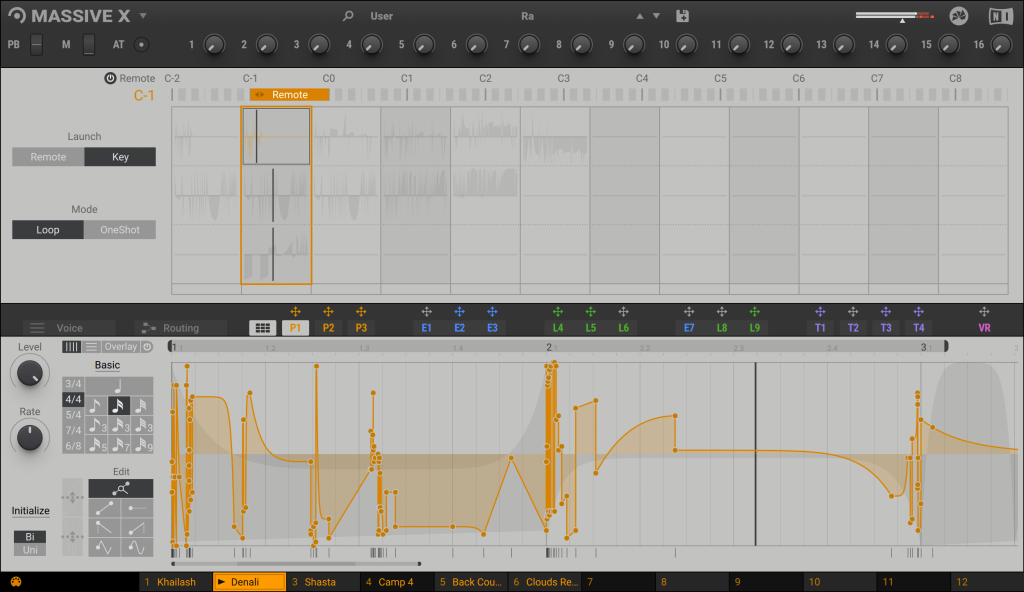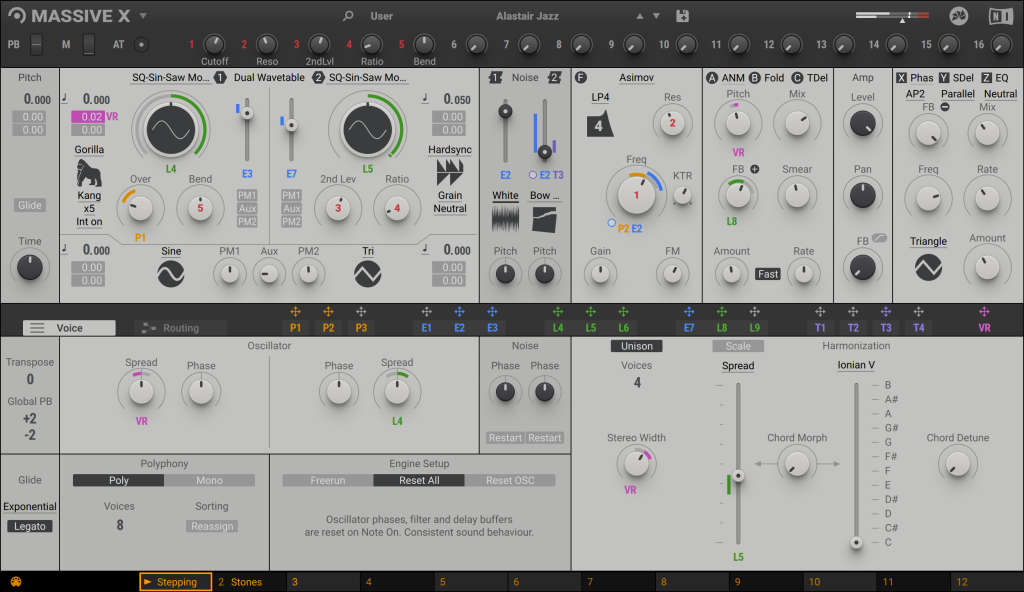The last time Native Instruments released a synth called Massive, they accidentally helped define genres (EDM, dubstep). But MASSIVE X returns to the original vision: make it easier to get deep with wavetables and modularity and go wild with sound. And now, the wait is over.
It’s been years in the making. But the original team behind Massive are back with a sequel to one of the most influential software synths ever made.
I was actually the very first press member scheduled to see Massive, back in the day. But what that tells you is, initially they thought they were making something for nerds, not what would become EDM mainstages. (Presumably they might have asked someone important not only as a nerd, otherwise.)
In 2019, MASSIVE X enters a world that’s not only been shaped by the first Massive, but is also far more comfortable with digital sounds and modularity, the staples of the original. Even inside NI, you’ve got REAKTOR and BLOCKS. There are plenty of other wavetable synths, plenty of semi-modular plug-ins. There are semi-modular synths – heck, Moog alone has three just in one line. There are Eurorack modulars in pricey hardware racks that require a screwdriver and modeled in software so you just need a laptop.
I mean, basically, those of us who love synths are all really spoiled. And like any spoiled child, little wonder there are bunches of those people whining and crying and rolling around on the floor like a toddler who ate too much candy. Well… if you read message forums, which I try not to.
So is there a place for MASSIVE X? You’ll hear plenty of talk from Native Instruments and reviewers alike, but let’s boil this story down.

MASSIVE X is a rarity – a kitchen sink digital synth plug-in that keeps its front panel easy to read.

Deep routing lets you path when you want to. But unlike a full-blown modular, that doesn’t stop you from creating sounds (and even modularity) straight away – and your sound design remains within a consistent interface and architecture.
Bigger on the inside than it is on the outside
Basically, the latest MASSIVE gives you this: it makes an argument for a semi-modular design by packing the oscillators with features, and then giving you ways of playing and modulating and inter-connecting all that depth easily. It walks that balance between complexity under the hood and legibility inside a coherent interface. So while other people might easily dismiss adding another semi-modular plug-in when you could just patch, there is a fundamentally different method to constructing sounds based on this architecture:
All about those oscillators. 170 wavetables, 10 oscillator modes, submodes for each of the oscillator modes – Massive focuses you on one architecture and one UI, but then gives you loads of choices once you’re there.
Get weird without even patching. It’s a true semi-modular, so you can make sounds without patching anything – and you can use its phase modulation oscillators to start that modulation just from the oscillator section. (Yeah, you’ll wind up doing some sound designs where you never get past those oscillators. And that’s fun, anyway.)
Route and patch in ways conventional modulars can’t. With a huge routing matrix and a unique approach to insert effects, you can swap all sorts of unique processors inside an individual sound – and recall all of those as presets. Any control output can be connected to any input; audio can go to and from anywhere you like. It’s enormously flexible.
There are plenty of synths out there with deep architectures, but MASSIVE X allows you to then take that depth and work with it:
Trackers give you sophisticated control over how MASSIVE X behaves as an instrument – by designing how it responds as you play.
Make uniquely playable instruments. NI have added a number of tools for tracking input from performance, as in velocity, and then scaling and mapping that where you like. This means you can make sounds like instruments, and ‘play’ a lot of that sonic depth live. (There are four Tracker modules to accomplish this.)
Add variety in performance and modulation. Tracker modules let you play live; Performer modulators let you draw in up to eight bars of modulation patterns and use those without playing. That can mean either unattended modulation in the sound, or can be triggered live with your controller.
You have 9 slots for LFOs, voice randomization, and then a bunch of potential sources and shapes for those variations.
The original MASSIVE isn’t going anywhere. And that’s important, because it’s light on the CPU in a way the new X – and other plug-ins – aren’t.
But MASSIVE X is simply a beast. As a flagship for Native Instruments, it enters some competitive waters – not the least being the fact that NI itself has, effectively, more than one flagship.

Performer envelopes give you the kind of extensive, visual modulation you expect from 2019 flagship software. The Remote Editor lets you trigger those envelopes live, making this a tool for improvisation or onstage.
Inside the Voice
Having said MASSIVE X is all about having a consistent architecture and UI – there is definitely a candy store inside. Just some rough ideas of specs, to give you an idea:
Wavetable modes: Standard, Bend, Mirror, Hardsync, Wrap, Forant Capture, ART, Gorilla, Random, Jitter
Insert Effects: Anima, BitCrusher, Correction Filter & VCA, Fold Wrap, Frequency Shifter, Distortion, Track Delay
Unit FX: Dimension Expander, Flanger, Nonlinear Labs, Phaser, Standard EQ, Stereo Delay, Stereo Expander

The Voice page. You can also find some possibilities messing about with Noise Restart, Oscillator Restart, Spread and Engine Reset – think serious sound design with phasing. Combine that with the various oscillator types and modes and poly/mono/unison modes, and a really wild option called Unisono (for unique, analog-ish drifts and detunes), and you could probably devote a whole month in the studio just on this page and be perfectly satisfied.
Filling a Massive niche?
The thing is, MASSIVE X makes even more sense in 2019 than it did when it first arrived. And if MASSIVE demonstrated that a larger slice of the population was ready for edgy, hyper-modulated experimental sounds, MASSIVE X might demonstrate that more people are ready for experimental sound design..
This isn’t a straight modular workflow. It isn’t a Eurorack. It isn’t REAKTOR. And it shouldn’t be any of those things. Instead, MASSIVE X brings back what made the first MASSIVE compelling – drag and drop routing, easy visual “saturn ring” modulation – and adds more sonic depth, the kinds of organic quality now possible on today’s CPUs, and more visual feedback. We all spend too much time staring at screens, but MASSIVE X gives us a good reason to look back – and is far easier on the eyes (and brain) in the process.
So, sure, we are spoiled for choice, which I’m sure means MASSIVE X will get some significant hostility from the sorts of people who lurk in comment threads instead of make sounds. But I’m happy to have my cake and eat it, and my other five cakes, too.
From my own vantage point, having not been entirely swayed by would-be contenders to the plug-in throne, I think MASSIVE X will be ideal as a complement to open-ended modulars. Having a single oscillator section that does this much means you don’t get lost window-shopping modulars. And that matrix and the depth of Trackers and Performers means MASSIVE X is manageable when other modulars (hardware or software) turn into messes of spaghetti-routing, at least for sounds you want to pack to the brim with subtle shifting transformations over time.
More details of this as I spend more time with the now-finished build. (Sound design, too – just give me some time on that!)
[watch this space, we should have the overview video from NI shortly…]
https://native-instruments.com/
Cost:
USD / EUR 199
USD / EUR 149 upgrade from the previous version
Included in KOMPLETE 12 (and greater editions)
Video walkthroughs
Our friends at SonicState and NI themselves have now posted walkthrough videos.
Also I’ve been talking to Richard Devine about how much he’s into MASSIVE X. Here’s a video of him enjoying it:
The competition
There’s indeed a lot of competition. Look to:
U-he‘s ZEBRA2, Hive 2. Also deep modulation, but with a single window mode – more like Massive 1 – to MASSIVE X’s various pages and options.
ARTURIA Pigments We’ll be looking more soon at the sound possibilities of this one. It’s perhaps more conservative than MASSIVE X, but its virtual analog/wavetable hybrid is a crowd pleaser, there’s a unique and easy-to-follow interface, and it has a clear high-contrast dark look to the all-gray/beige Massive approach.
Serum of course arguably stole the bass crown from Massive as NI bided their time on an update. It is focused on wavetables (and custom wavetables) compared to MASSIVE X’s fascinating sprawl.
Who else would you want to see up for comparison? Let us know.
To me, at least my initial impression is all this mayhem of choice makes MASSIVE X stand out, but we’ll be interested to dig deeper and get feedback from other sound designers.